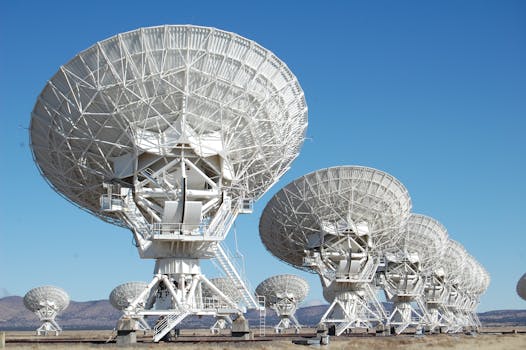GEO Satellites: Unlocking the Power of Geostationary Orbit

GEO Satellites: Unlocking the Power of Geostationary Orbit
GEO satellites, or Geostationary satellites, are a type of satellite that orbits the Earth at an altitude of approximately 36,000 kilometers, remaining stationary relative to a fixed point on the equator. This unique characteristic allows GEO satellites to provide a wide range of benefits and applications, from telecommunications and navigation to weather forecasting and Earth observation.
GEO satellites have been in use for several decades, with the first geostationary satellite, Syncom 2, launched in 1963. Since then, the technology has evolved significantly, with advancements in materials, propulsion systems, and instrumentation. Today, GEO satellites play a vital role in modern satellite technology, with hundreds of satellites in geostationary orbit providing critical services to governments, businesses, and individuals around the world.
How GEO Satellites Work
GEO satellites work by orbiting the Earth at a speed that matches the planet’s rotational period, which is approximately 24 hours. This allows the satellite to remain stationary relative to a fixed point on the equator, providing a constant and unobstructed view of a specific region. The satellite’s orbital altitude and velocity are carefully calculated to ensure that it remains in a stable and stationary position, with minimal drift or movement.
The instrumentation on a GEO satellite can vary depending on its intended application. For example, a telecommunications satellite may be equipped with transponders and antennas to receive and transmit signals, while a weather forecasting satellite may be equipped with cameras and sensors to monitor cloud patterns and atmospheric conditions. Regardless of the specific application, GEO satellites rely on advanced propulsion systems, such as ion engines or Hall effect thrusters, to maintain their position and velocity.
Applications of GEO Satellites
GEO satellites have a wide range of applications, from telecommunications and navigation to weather forecasting and Earth observation. Some of the most significant applications of GEO satellites include:
Telecommunications: GEO satellites provide critical telecommunications services, including television broadcasting, internet connectivity, and mobile phone networks. They allow for global coverage and can provide services to remote and underserved areas.
Navigation: GEO satellites are used in navigation systems, such as GPS, to provide location information and timing signals. They allow for accurate navigation and are essential for a wide range of applications, from aviation and maritime to personal navigation and tracking.
Weather Forecasting: GEO satellites are used to monitor weather patterns and provide critical weather forecasting information. They can detect changes in cloud patterns, atmospheric conditions, and sea surface temperatures, allowing for accurate weather forecasts and warnings.
Earth Observation: GEO satellites are used to monitor the Earth’s surface and provide critical information on environmental conditions, such as deforestation, ocean currents, and natural disasters. They can also be used to monitor agricultural productivity, urban development, and other human activities.
Challenges and Limitations of GEO Satellites
While GEO satellites provide a wide range of benefits and applications, they also face several challenges and limitations. Some of the most significant challenges include:
Orbital Congestion: The geostationary orbit is a limited resource, and the increasing number of satellites in orbit is leading to congestion and interference. This can result in reduced signal quality, increased risk of collisions, and decreased overall performance.
Space Debris: The geostationary orbit is also susceptible to space debris, which can pose a significant risk to operational satellites. Space debris can include old satellites, rocket parts, and other objects that can collide with operational satellites and cause damage or destruction.
Regulatory Framework: The regulatory framework for GEO satellites is complex and can vary depending on the country and region. This can create challenges for satellite operators, who must navigate a complex web of regulations and laws to ensure compliance and avoid penalties.
Conclusion
In conclusion, GEO satellites are a crucial part of modern satellite technology, providing a wide range of benefits and applications. From telecommunications and navigation to weather forecasting and Earth observation, GEO satellites play a vital role in our daily lives. While they face several challenges and limitations, the benefits of GEO satellites far outweigh the costs, and they will continue to be an essential part of our technological landscape for years to come.




